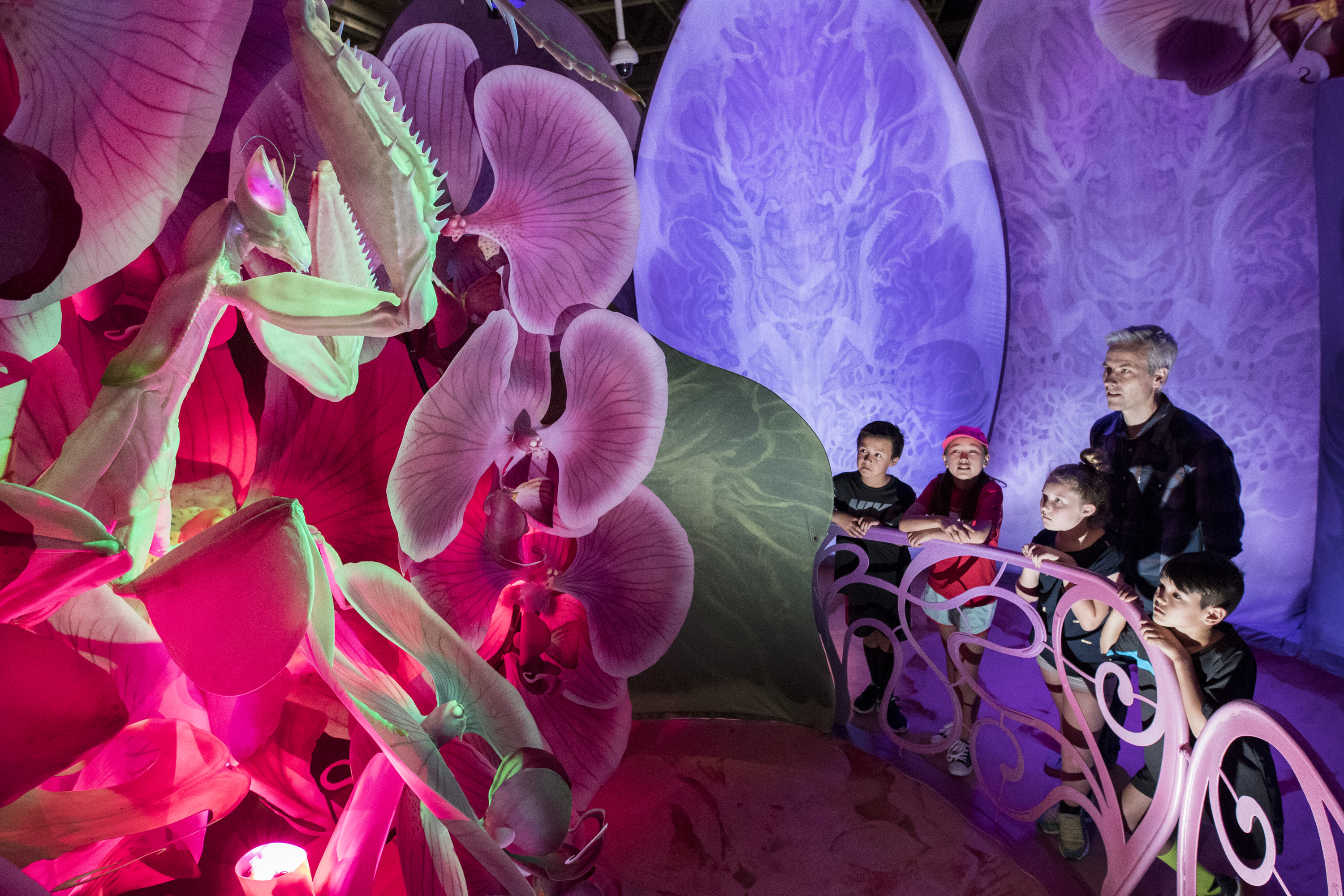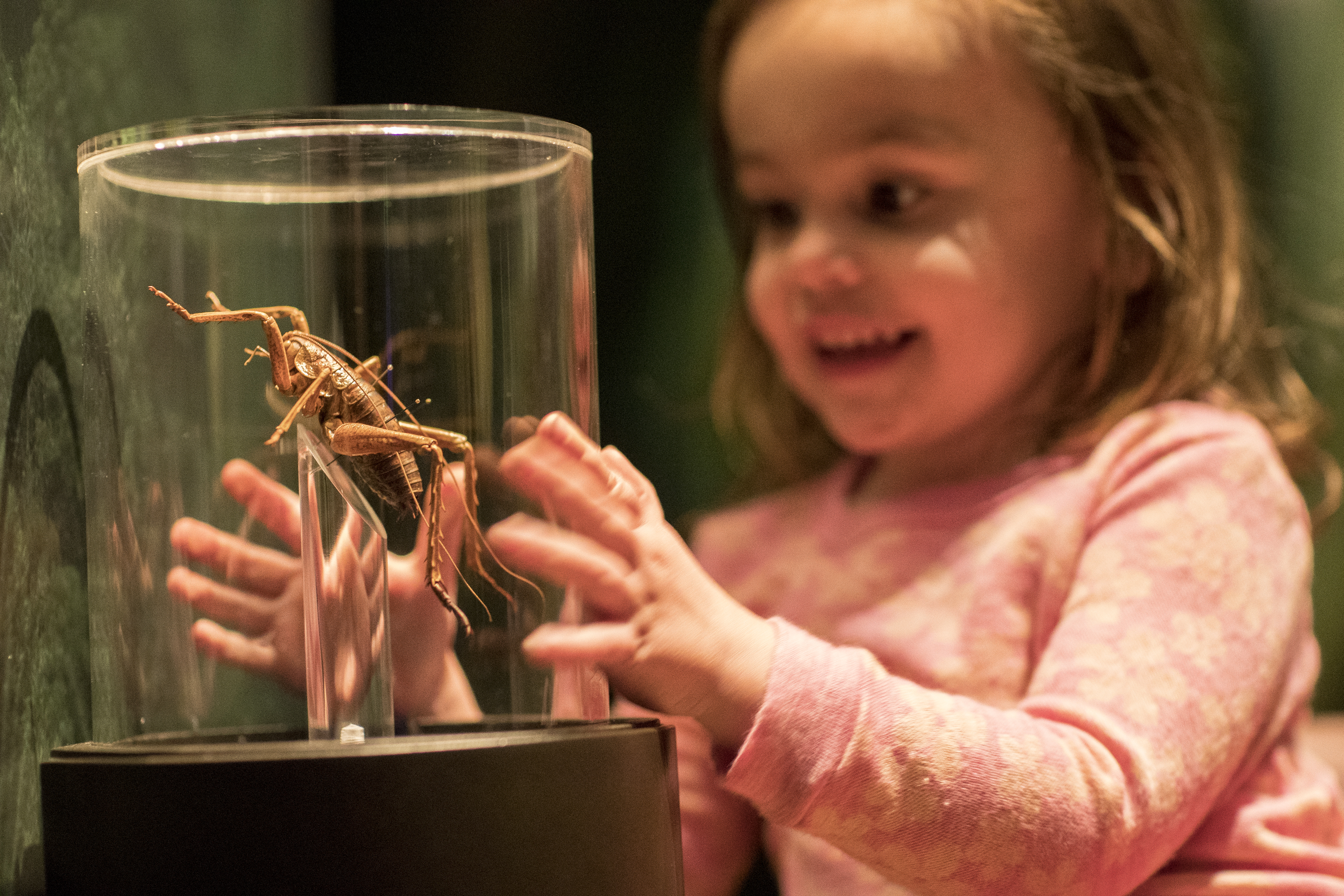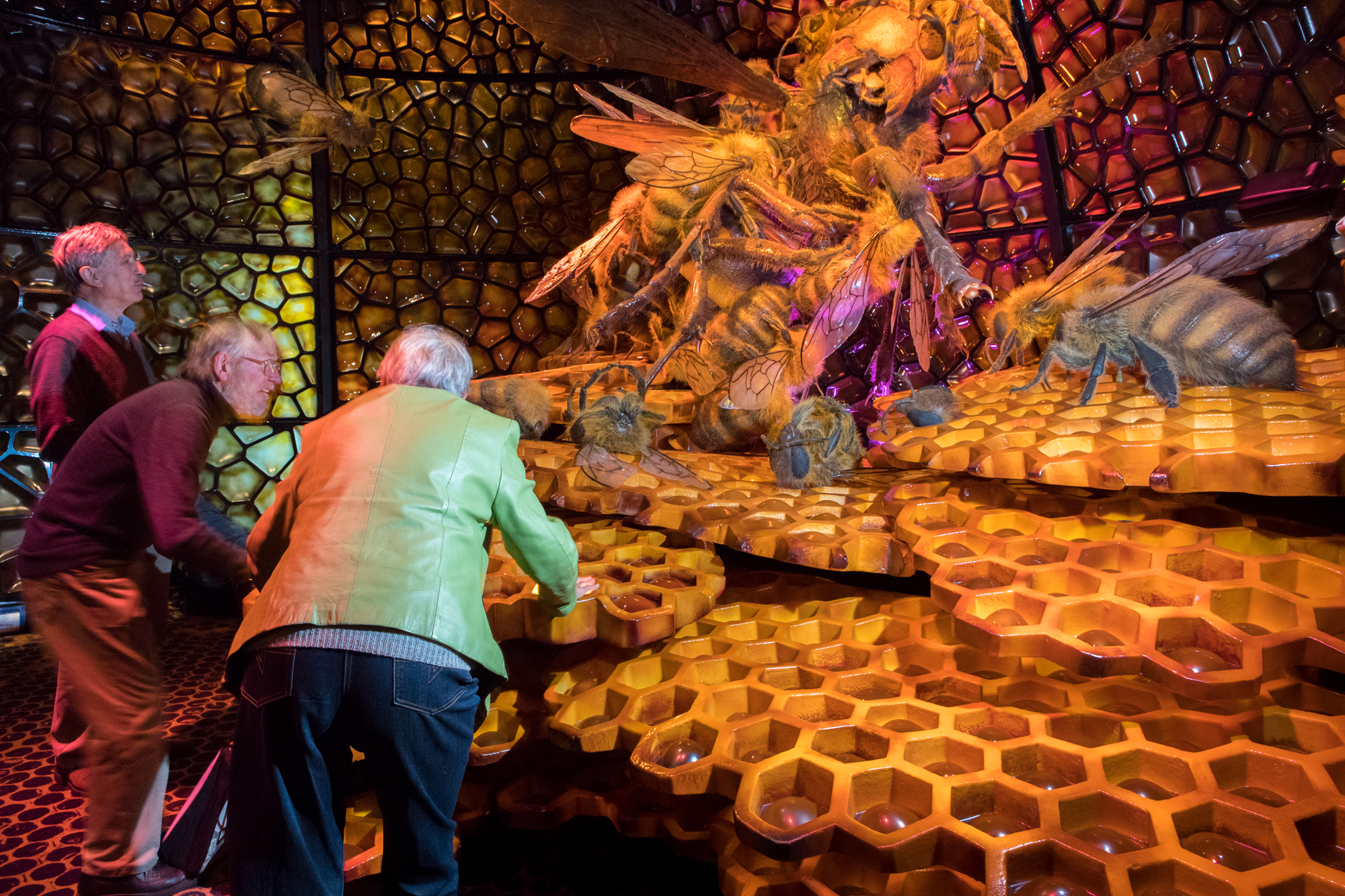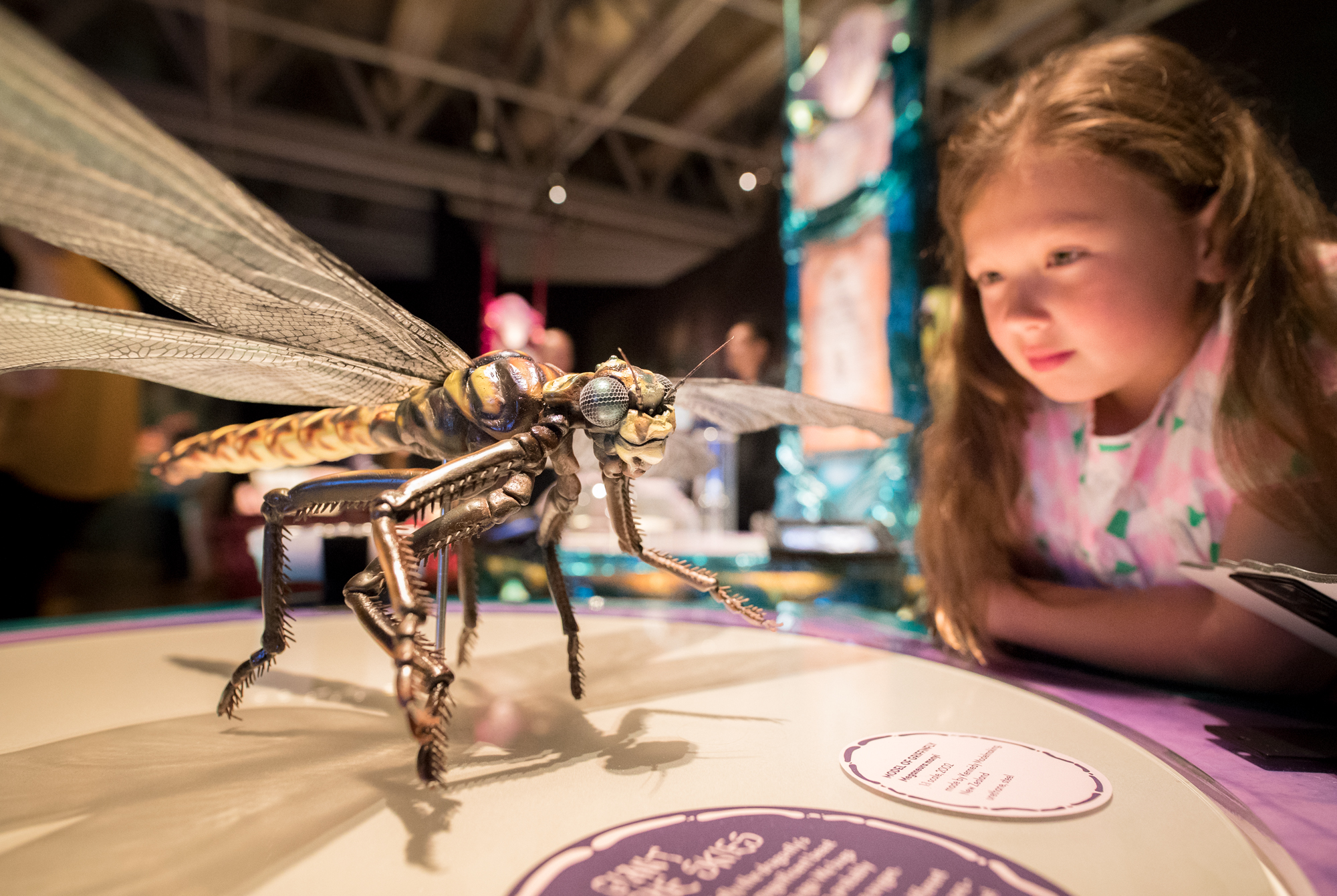
The Denver Museum of Nature & Science welcomes “Bugs.” They’re bigger, they’re better, they’re buggier than ever. This interactive exhibition takes you into the incredible world of critters as you learn how to think, work and come eye to eye with nature’s true heroes.
Will you save the Japanese honeybee hive from an invading hornet? Join forces and press on multiple buttons to raise the temperature in the beehive and get rid of the intruder. Can you spot the orchid mantis before she spears you for her lunch in the secret garden? Light up your flashlight against a group of flowers and find the camouflaged mantis. Can you fly as fast as the wind? Make your own paper insect and see if the wind tunnel makes it fly up high!
"Bugs" opens March 10 at the Denver Museum of Nature & Science. Get your tickets here.
HERE ARE 10 FUN FACTS ABOUT BUGS:

- Iridescent colors on the Blue Morpho butterfly, which is known for its bright blue wings are not created by pigments, but instead by the way light interacts with tiny structures on the Morpho's wing scales.
- Female Orchid Praying Mantises disguise as flowers to attract prey.
- The domesticated silkworm, which is primarily responsible for silk production that is used in fashion, and more is entirely dependent on humans and has been bred for thousands of years.

- The unique flight pattern of dragonflies continues to inspire engineers all over the world.
- There is a two inches long species of dragonfly that has the longest migration of any insect-spanning up to 11,000 miles which takes them four generations.
- Male orchid mantises are dull, greenish-brown colors while females are whitish pink or yellow with legs that resemble flower petals.
- Spider silk is so tough, it is being explored as a possible material for armor.

- Atlas moths never eat, only using energy stored during the caterpillar stage throughout their short adult lives of about 2 weeks. (Reference to exhibit content directly)
- Biomimicry is when human innovations draw from nature’s design-such as banknote counterfeit prevention technology that is drawing from a butterfly wing structure.
- When a hornet presents a threat to a hive of Japanese honeybees, the bees form a tight layer around the hornet-killing it through heat from the vibrations of their wings and the carbon dioxide respired by the bees.

